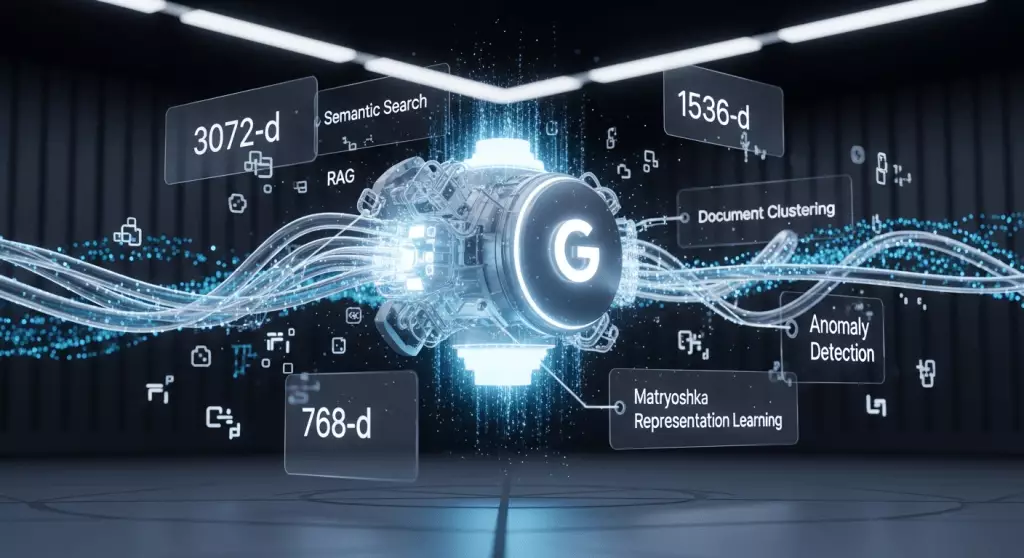Artificial intelligence has been on an unrelenting trajectory, but recent developments signal a pivotal shift that could redefine the entire landscape. Google’s launch of the Gemini Embedding model is more than just a new entry; it’s a statement of dominance and ambition. This model isn’t merely a sleek piece of technology—it embodies a strategic goal to establish the company’s supremacy in AI, especially in how machines understand and process human language across multiple modalities.
What sets Gemini apart is its impressive performance on the Massive Text Embedding Benchmark (MTEB), establishing it at the summit of current AI capability. Yet, the real story isn’t just about benchmark scores. It’s about the signal sent to the wider industry: that large tech firms are doubling down on integrated solutions designed to lock in user loyalty and generate ecosystem-like dependencies. Google’s emphasis on universality and ease of deployment demonstrates a clear intent to make AI tools accessible, powerful, and integrated within an existing cloud framework,-seemingly emphasizing convenience over craft.
However, this strategic move should raise questions about the broader implications for competition, innovation, and the long-term health of AI development. Is the industry genuinely steering toward democratization, or are we inching closer to monopolistic control with proprietary solutions that push smaller players and open-source communities to the periphery? The answer hinges on whether companies are willing to compromise control for immediate performance gains or if they’re prepared to navigate the complex world of open-source alternatives that threaten to undermine this centralization.
Embeddings: The Backbone of Modern AI and Cross-Modal Synergy
At a conceptual level, embedding technology marks a revolutionary departure from traditional keyword matching. Instead of static, exact term relationships, embeddings embody a dynamic, meaning-rich representation of data—texts, images, videos, and sounds—all mapped into a multi-dimensional space. This shift enables AI models to understand context, sentiment, and subtle nuances in ways that mimic human perception more closely.
The true potential of embeddings lies in their ability to fuse different data types—images with words, speech with visuals—leveraging cross-modal understanding to create more intuitive, human-like AI behavior. For instance, an e-commerce platform that combines images and product descriptions into a single, unified vector can deliver far more accurate, personalized recommendations. This is the dawn of genuinely perceptive AI systems, capable of interpreting complex, multimodal inputs rather than relying on siloed data pipelines.
Still, with this power comes significant responsibility. As these models become central to enterprise decision-making—driving automated document classification, behavioral analytics, or intelligent retrieval—the stakes are higher than ever. A misstep in design or implementation, perhaps stemming from overconfidence in proprietary models like Gemini, could lead to missed nuance or flawed insights. The risk lies not only in technical failure but in over-reliance on models that may seemingly perform “out-of-the-box,” but lack the flexibility to adapt to specific, complex domain needs.
The Strategic Divide: Proprietary Dominance vs. Open-Source Innovation
The release of Gemini ignites a fundamental strategic debate within the AI community and the enterprise world. On one side, there is Google’s carefully crafted, high-performance, easy-to-access API designed to deliver reliable, multi-lingual embeddings at a competitive price point. This proposition appeals to organizations seeking quick deployment, minimal technical overhead, and a seamless experience within Google Cloud’s ecosystem. For many, especially those with limited AI expertise or urgent operational needs, this approach is seductive—a reliable shortcut to harnessing emerging AI capabilities.
Yet, critically, this convenience comes with costs—chiefly, surrendering some degree of control, customization, and long-term independence. Proprietary solutions, although polished, risk creating vendor lock-in and stifling innovation outside their walled gardens. Larger organizations, those concerned with data sovereignty, and niche sectors such as healthcare or legal, face a difficult choice: accept a ready-made solution that may not fully meet specialized needs or embrace open-source models that offer deep control and bespoke tailoring.
Open-source projects, like Alibaba’s Qwen3-Embedding or Qodo’s Qodo-Embed-1-1.5B, present compelling alternatives. They are permissively licensed, allowing total control over code, data, and deployment environments. This flexibility is especially vital in regulated industries where compliance and sovereignty are paramount and where cost considerations drive organizations to build tailored solutions rather than relying solely on proprietary APIs. While open-source models often require more technical expertise to deploy and optimize, their presence embodies a broader movement towards decentralization—an essential counterbalance to the concentrated power of corporate AI giants.
This tension between convenience and control is not merely a technical debate; it reflects competing visions of the future. Will AI become an accessible tool endowed with the flexibility to serve niche needs, or will it be increasingly commodified—locked within the ecosystems of global tech giants eager to expand their influence under the guise of innovation?
Implications for the Future of Enterprise AI
The arrival of Gemini isn’t just about a new piece of hardware or software; it’s a litmus test for how organizations perceive AI adoption and strategic control. The allure of high-quality, out-of-the-box solutions can’t be understated—they promise faster results, less overhead, and instant scalability. But this temptation may obscure the hidden risks: loss of adaptability, potential vendor dependence, and the marginalization of open innovation.
In particular, the debate hinges on a fundamental question: should corporations prioritize ease and performance, or should they maintain the agility to pivot, customize, and innovate independently? From a market perspective, the short-term appeal of proprietary offerings like Gemini is undeniable. However, my liberal-leaning skepticism urges caution, emphasizing that technological monoculture breeds systemic vulnerabilities. Overreliance on dominant players stifles competition and risks entrenching a monopoly that could leverage AI to influence not only markets but societal narratives.
Moreover, the increasing sophistication of embeddings within enterprise workflows suggests a move toward more intelligent, autonomous decision-making tools. This push amplifies the importance of craft, oversight, and sovereignty. It’s not enough to have a powerful model; organizations must actively cultivate the strategic capacity to develop or adapt models suited for their unique needs—something open-source inherently supports.
As the competition intensifies, the real winners will be those who balance performance with strategic independence. Google’s Gemini exemplifies the trajectory of current corporate AI ambitions—powerful, integrated, streamlined. Yet, the future depends on fostering a diversified ecosystem where open innovation and proprietary strength coexist. Only then can enterprise AI truly be resilient, adaptable, and aligned with broader societal interests.
By critically examining the rise of high-performance models like Gemini, it becomes clear that the dominant narrative should not simply revolve around technological supremacy but must include vigilant oversight of the long-term implications—control, independence, and the preservation of competitive innovation capacity. The question is not only about which model is better today but about what kind of AI landscape future generations will inherit.









Leave a Reply